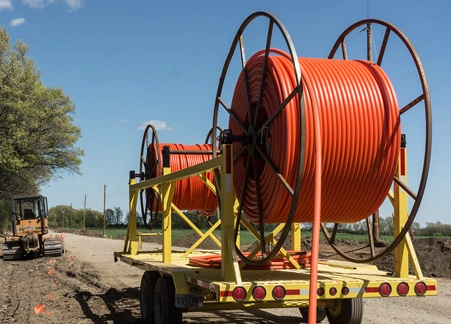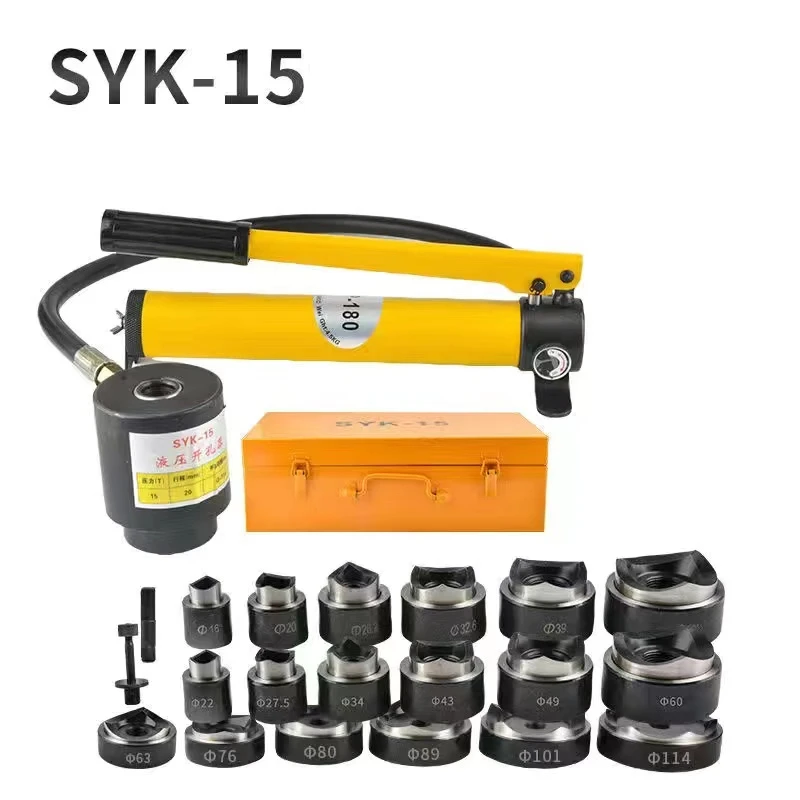
-
 Afrikaans
Afrikaans -
 Albanian
Albanian -
 Amharic
Amharic -
 Arabic
Arabic -
 Armenian
Armenian -
 Azerbaijani
Azerbaijani -
 Basque
Basque -
 Belarusian
Belarusian -
 Bengali
Bengali -
 Bosnian
Bosnian -
 Bulgarian
Bulgarian -
 Catalan
Catalan -
 Cebuano
Cebuano -
 Corsican
Corsican -
 Croatian
Croatian -
 Czech
Czech -
 Danish
Danish -
 Dutch
Dutch -
 English
English -
 Esperanto
Esperanto -
 Estonian
Estonian -
 Finnish
Finnish -
 French
French -
 Frisian
Frisian -
 Galician
Galician -
 Georgian
Georgian -
 German
German -
 Greek
Greek -
 Gujarati
Gujarati -
 Haitian Creole
Haitian Creole -
 hausa
hausa -
 hawaiian
hawaiian -
 Hebrew
Hebrew -
 Hindi
Hindi -
 Miao
Miao -
 Hungarian
Hungarian -
 Icelandic
Icelandic -
 igbo
igbo -
 Indonesian
Indonesian -
 irish
irish -
 Italian
Italian -
 Japanese
Japanese -
 Javanese
Javanese -
 Kannada
Kannada -
 kazakh
kazakh -
 Khmer
Khmer -
 Rwandese
Rwandese -
 Korean
Korean -
 Kurdish
Kurdish -
 Kyrgyz
Kyrgyz -
 Lao
Lao -
 Latin
Latin -
 Latvian
Latvian -
 Lithuanian
Lithuanian -
 Luxembourgish
Luxembourgish -
 Macedonian
Macedonian -
 Malgashi
Malgashi -
 Malay
Malay -
 Malayalam
Malayalam -
 Maltese
Maltese -
 Maori
Maori -
 Marathi
Marathi -
 Mongolian
Mongolian -
 Myanmar
Myanmar -
 Nepali
Nepali -
 Norwegian
Norwegian -
 Norwegian
Norwegian -
 Occitan
Occitan -
 Pashto
Pashto -
 Persian
Persian -
 Polish
Polish -
 Portuguese
Portuguese -
 Punjabi
Punjabi -
 Romanian
Romanian -
 Russian
Russian -
 Samoan
Samoan -
 Scottish Gaelic
Scottish Gaelic -
 Serbian
Serbian -
 Sesotho
Sesotho -
 Shona
Shona -
 Sindhi
Sindhi -
 Sinhala
Sinhala -
 Slovak
Slovak -
 Slovenian
Slovenian -
 Somali
Somali -
 Spanish
Spanish -
 Sundanese
Sundanese -
 Swahili
Swahili -
 Swedish
Swedish -
 Tagalog
Tagalog -
 Tajik
Tajik -
 Tamil
Tamil -
 Tatar
Tatar -
 Telugu
Telugu -
 Thai
Thai -
 Turkish
Turkish -
 Turkmen
Turkmen -
 Ukrainian
Ukrainian -
 Urdu
Urdu -
 Uighur
Uighur -
 Uzbek
Uzbek -
 Vietnamese
Vietnamese -
 Welsh
Welsh -
 Bantu
Bantu -
 Yiddish
Yiddish -
 Yoruba
Yoruba -
 Zulu
Zulu


جولائی . 07, 2025 07:08 Back to list
High-Quality Insulated Stick for Electrical Safety Durable Insulated Hot Stick & Wire Clamps
- Introduction to insulated stick
: Definition, history, and fundamentals - Data-driven overview: Global market, demand, and growth trajectory
- Technical advantages: Material science, certifications, and innovations
- Manufacturer comparison: Key brands, performance metrics, and pricing (data table)
- Customization solutions: Tailoring insulated hot stick and wire clamps
- Industry application cases: Real-world deployment and safety outcomes
- Conclusion: Role and future trends of insulated stick technologies

(insulated stick)
Introduction to the Insulated Stick: Definition, Fundamentals, and Industry Background
The insulated stick, also widely known as a hot stick, is a specialized device engineered to protect utility workers and technicians from electrical hazards during the installation, maintenance, and repair of high-voltage power lines. Since the 20th century, these tools have become an essential part of electrical safety protocols worldwide. By providing an extended reach made from dielectric materials such as fiberglass-reinforced polymers, these sticks ensure that physical separation from energized components is both practical and effective.
Commonly, insulated hot sticks are used in conjunction with insulated wire clamps and related attachments for a variety of tasks including voltage measurement, disconnection/connect operations, and debris removal. Their design is governed by international safety standards—primarily ASTM F711 in the United States and IEC 60855 globally—ensuring consistent performance for voltages often exceeding 765 kV. The growing electrification in cities and the modernization of transmission infrastructure have continuously elevated the significance of these specialized tools.
Global Market Overview: Growth, Demand, and Strategic Importance
The insulated stick market is projected to witness significant growth, with market research from 2023 reporting a compound annual growth rate (CAGR) of 5.7% from 2022 to 2030. In 2022 alone, the global insulated stick segment reached a valuation of $665 million. Factors fueling this expansion include investments in grid resilience, the integration of renewable energy sources, and a heightened emphasis on electrical safety regulations.
According to a 2023 industry whitepaper, over 87% of utilities in North America have mandated insulated hot stick deployment for operations involving voltages above 15 kV. In Asia Pacific, infrastructure upgrades in countries like China and India have led to a 31% increase in demand for insulated wire clamps and related elevated safety tools over the past five years. These statistics highlight not only the adoption but also the strategic relevance of these devices in reducing workforce danger and operational downtime.
The upward trajectory in demand is further augmented by the rural electrification agenda in Africa and South America, providing a robust outlook for the insulated stick ecosystem. This data-driven perspective underscores the importance for suppliers, manufacturers, and asset managers to stay ahead with quality, innovation, and reliability.
Technical Advantages: Materials, Performance, and Safety Certifications
At the core of insulated stick innovation is the use of high-dielectric composite materials, primarily epoxy resins infused with E-glass or S-glass fibers. These materials offer a dielectric strength in excess of 400 kV/inch—dramatically reducing risk when working near energized circuits. Weight optimization, another crucial aspect, ensures minimal operator fatigue even during long shifts. Presently, most leading insulated hot sticks weigh less than 8 lbs for a 12-foot section, yet can withstand mechanical loads above 250 lbs.
Certified compliance with safety standards is non-negotiable; ASTM F711 mandates not just dielectric integrity but also performance through wet and dry testing cycles. Superior surface resistance to UV degradation, moisture absorption, and chemicals ensure product longevity—often exceeding 15 years in field conditions. The efficacy of insulated wire clamps has been heightened with the advent of mechanically interlocked jaws, quick-release mechanisms, and enhanced gripping geometries for cables ranging from 10 AWG to 500 MCM.
Furthermore, digital integration now enables the integration of RFID tracking and condition-based maintenance, offering new benchmarks in asset management. Such technical leaps position insulated sticks and accessories as decisive enablers for enhanced network uptime and personnel safety.
Manufacturer Comparison Table: Brands, Metrics, and Value Assessment
The market comprises several dominant manufacturers, each offering a diverse portfolio of insulated stick solutions. The following comparison table illustrates key data points:
| Manufacturer | Model | Length (ft) | Weight (lbs) | Dielectric Strength (kV/inch) | Wire Clamp Compatibility | Certifications | 5-Year Warranty | Approx. Price (USD) |
|---|---|---|---|---|---|---|---|---|
| Hastings | HVX-19000 | 10-40 | 7.1 | 440 | Universal Jaw, T-clamp, S-clamp | ASTM F711, OSHA | Yes | $480 – $1,650 |
| Chance | IEC UltraLite | 8-30 | 6.8 | 450 | Standard, Heavy-duty clamps | IEC 60855, EN 60832 | Yes | $510 – $1,590 |
| AB Chance | HY-Stik V3 | 6-24 | 7.0 | 430 | SnapLock, Cam-type | ASTM F711, CE | Yes | $445 – $1,250 |
| Bashlin | 3400 Series | 10-20 | 8.2 | 400 | Universal & Custom clamps | ANSI, IEC | Yes | $495 – $1,390 |
| Greenlee | UltraSURE | 8-32 | 6.5 | 445 | T-clamp, S-clamp integration | ASTM, OSHA | Yes | $540 – $1,410 |
The table underscores performance, value, compatibility with insulated wire clamps, and the breadth of certifications offered by each brand. For large utilities or specialized contractors, aligning product selection to operational requirements—length, weight, certified standards, and pricing—ensures optimal ROI across both capital and safety metrics.
Customization Solutions: Engineering Insulated Hot Stick and Wire Clamp Systems
The complexity and variability of power transmission environments necessitate custom-engineered solutions for insulated stick applications. Leading manufacturers now offer design and fabrication services for tailored lengths (from under 6 ft to over 40 ft), unique tip configurations for specialized switching or testing, and modular extension systems. Insulated hot sticks can be adapted with integrated voltage detectors, circuit testers, or conductive grounding accessories.
In the case of insulated wire clamps, customization includes selectable jaw geometries (round jaw, V jaw, parallel jaw), material upgrades (stainless steel, brass, or aluminum alloys), and ergonomic handles to improve precision and operator comfort. Surface treatments can provide additional resistance to corrosion and particulates, extending product lifetime in harsh climates. Design consultations typically include finite element analysis (FEA) and field simulation, ensuring solutions meet site-specific dielectric and mechanical demands.
Importantly, third-party testing and documentation are standard practice before deployment, supported by digital tracking for inventory and inspection cycles. Modern supply chains empower rapid prototyping that can be delivered from conception to field trial in under 60 days for critical projects.
Application Case Studies: Deployment, Safety Successes, and Measured Impact
Several high-profile transmission and distribution operators have reported tangible improvements in worker safety and operational efficiency following the integration of advanced insulated stick technologies. For example, a 2021 project across 500 miles of 400 kV transmission in Texas employed modular insulated hot sticks (supplied with RFID tagging) and found a 48% reduction in time to complete live-line maintenance tasks as compared to the previous year. Incident reporting highlighted zero lost-time injuries, versus three in the prior 12-month period.
In Europe, a leading grid operator customized insulated wire clamps for cold, wet conditions, reinforced with thermoplastic coatings and automated tension locking. The initiative resulted in improved conductor stability under load, reducing connector replacement rates from 4.6% annually to just 1.2% over 24 months, while measured operator hand fatigue was down by 32% according to an internal study of 120 field technicians.
Municipal utilities have adopted digital inspection regimes where insulated stick assets are tagged and tracked, reducing unscheduled tool downtimes by 55%, further buttressing reliability for rapid response crews. These real-world success cases reinforce the economic and safety rationale of investing in high-performance, standards-compliant insulated stick solutions.
Conclusion: The Role and Prospects of Insulated Stick Technology
In summary, the insulated stick—supported by technical progress in materials, compliance, and smart customization—continues to stand at the forefront of electrical safety. Enhanced by data, proven by real-world deployments, and sharpened by robust competition among manufacturers, these tools now define best practice in high-voltage operations.
Looking ahead, embedded sensors for real-time diagnostics, predictive failure analytics, and greater interoperability with other utility assets are poised to drive the next wave of innovation. With the shifting landscape of grid modernization and the uptick in live-line maintenance, staying ahead with optimized insulated hot stick and wire clamp solutions will remain essential for risk mitigation, workforce safety, and operational excellence.
For utilities and service providers worldwide, investment in accredited, next-generation insulated stick systems translates not only to compliance, but also to tangible competitive advantage in a challenging and evolving market.

(insulated stick)
FAQS on insulated stick
Q: What is an insulated stick?
A: An insulated stick is a safety tool designed to handle electrical equipment while protecting the user from electric shocks. It is commonly used by linemen and electricians. The insulation prevents current from passing through the operator.Q: How does an insulated hot stick differ from a regular insulated stick?
A: An insulated hot stick is specifically rated for use near live electrical lines and equipment. It provides extra protection to safely perform maintenance on energized systems. Its insulation is tested for higher voltage resistance.Q: What are insulated wire clamps used for?
A: Insulated wire clamps are used to securely hold or connect wires during electrical work, providing safety from electric shocks. They are typically used with insulated sticks for added reach and protection. These clamps are essential in live-line operations.Q: When should I use an insulated hot stick?
A: Use an insulated hot stick whenever working near or handling energized high-voltage electrical equipment. It protects against accidental electrical contact. Always ensure the tool's voltage rating matches your application.Q: How should insulated sticks and wire clamps be maintained?
A: Regularly clean and visually inspect insulated sticks and wire clamps for cracks or contamination. Store them in a dry place and test their insulation periodically. Proper maintenance ensures reliable performance and user safety.Latest news
duct-rodders-and-conduit-rod-tools
NewsAug.22,2025
ratchet-pullers-and-wire-tightening-tools
NewsAug.22,2025
chain-ratchet-pullers-and-hoist-solutions
NewsAug.22,2025
telescopic-hot-stick-for-electrical-and-high-voltage-use
NewsAug.22,2025
cable-clamp-and-insulated-cable-clamp-systems
NewsAug.22,2025
duct-rodder-conduit-rodder-and-cable-solutions
NewsAug.22,2025








